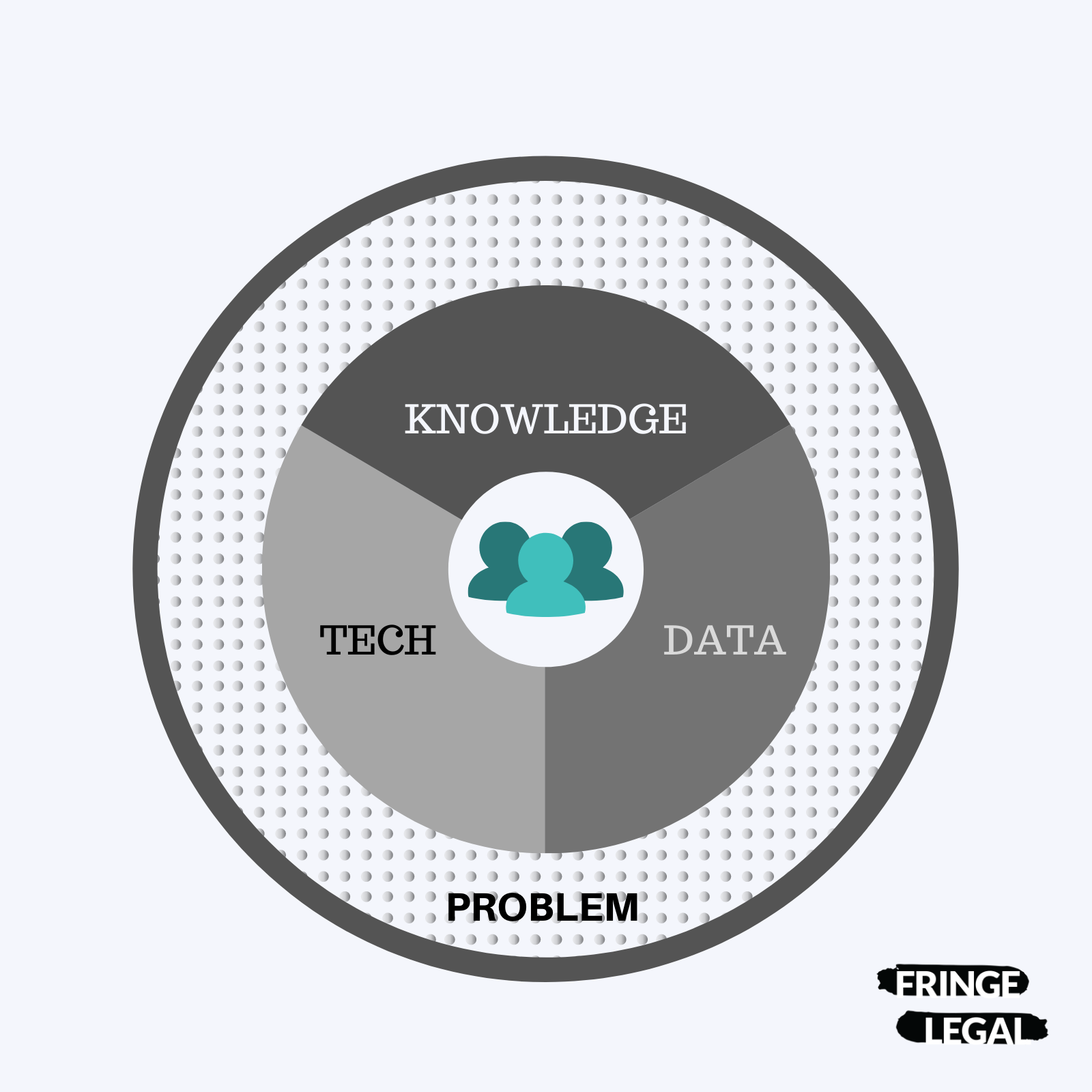Fringe Legal #0015 - a framework for problem solving / raising funds during COVID / collaborating remotely
Sep 14, 2020 8:00 am
Hi
Here are 4 things that were worth sharing.
THINK
I love working on difficult problems. Problem-solving is an essential cognitive activity, but one that most don't spend much time learning.
The diagram above was inspired by Priti Saraswat (my wife), as we discussed her approach to tackling knowledge and innovation problems. This is an oversimplified model for tackling innovation problems:
- Outer circle: identify and scope the problem. Do not start solving until you know what the problem is and who feels the pain. Is this a problem worth tackling, now?
- Middle circle: the approach. Focus on the data (what input do you need, and what output you aim to produce to measure/evaluate your solution). How can you leverage the knowledge housed internally to test hypotheses - what information is missing? How can technology play a role - this is purposefully mentioned last because it should be an enabler, not the reason to take action.
- Inner circle: the people are everything. The people are central to it all - who will the solution serve? How do they benefit? How can you encourage a feedback loop fostering the iterative improvement of your solution?
Of course, in practice, things are much more complicated and messy. However, I find grounding in the above as I'm reminded of this quote by Paulo Coelho:
Once a problem is solved, its simplicity is amazing.
READ
One of my favorite blogs - Farnam Street - has a great article providing a primer on algorithms. It's important to understand what algorithms are, where, and how they surface. They are not going away, and it's important to know how to minimize bias to make better decisions.
We need to accept that algorithms can’t solve all problems, and there are limits to their functionality. In Hello World, Fry devotes a chapter to the use of algorithms in justice. Specifically, algorithms designed to provide information to judges about the likelihood of a defendant committing further crimes. Our first impulse is to say, “Let’s not rely on bias here. Let’s not have someone’s skin color or gender be a key factor for the algorithm.” After all, we can employ that kind of bias just fine ourselves. But simply writing bias out of an algorithm is not as easy as wishing it so.
This is a short read (less than 10 minutes) and will provide a good introduction to many of the themes to think about further.
WATCH
It's important to remember the fundamental lessons, especially when you are moving fast. This was very much the theme of my discussion with David Wilson - Managing Director of Tiger Eye Consulting.
We spoke about collaboration, managing customer contact, and ideas on running effective meetings (keep them short, focused, and purposeful) during our discussion.
You can watch the full episode here (26 minutes)
LISTEN
In the last week, you may have seen Athennian in the news. They are an entity management company that recently completed a Series A to bring their total funding to CAD 10M! I had the pleasure of speaking with their CEO and co-founder, Adrian Camara.
We went beyond the press release to explore the experience of raising a funding round during the pandemic (they started in March 2020 - closed in July!), building a consumer-grade user experience to augment the current workflow to break in, and how the CEO shifts as the company double in employees and explode in valuation.
Listen to the full episode (17 minutes)
Stay well.
Ab
Help us grow: If you know anyone who will enjoy this, please forward this email, or ask them to sign up.



